Started to put this in the "What did you fix today?" thread, but it got too long. Made more sense to post it here.
The Glenn 1600 base amplifier used six 4CX250B tubes in parallel. Had another amplifier come through the shop marked "Galaxie 2000". Looks like a Glenn on the inside, but there are differences.
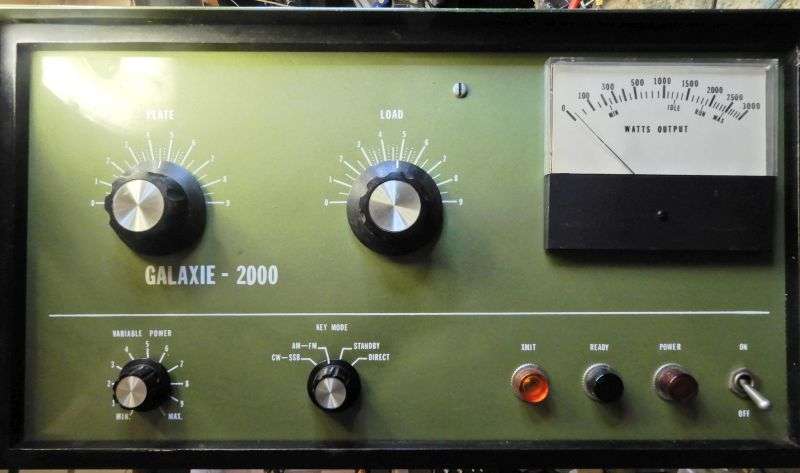
Besides the cabinet color, there are two differences at a glance.
Oops, didn't snap a front-panel shot of the last Glenn we saw. What's different is a light and a switch are missing from this "Galaxie".
The Glenn has a light marked "Fault" and a pushbutton marked "Reset" on the front panel.
This one doesn't.
Other than that, they appear pretty much the same on the inside.
They both use the same whack-a-doodle transformer and high-voltage rectifier/filter setup. Six separate secondary windings of 260 Volts apiece are separately connected to a bridge rectifier and a 80uf 450-Volt filter cap.
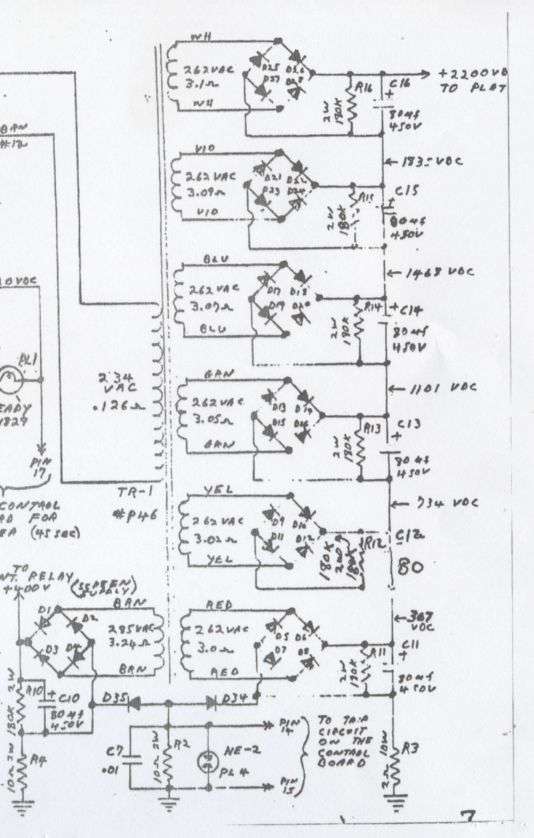
This shot is "before" upgrading the high voltage. The bundle of wires running down the center of the board has the six pairs of wires, each pair feeding 260 Volts AC to a bridge/filter cap. The six filter caps are stacked in series to obtain around 2200 Volts Dc.
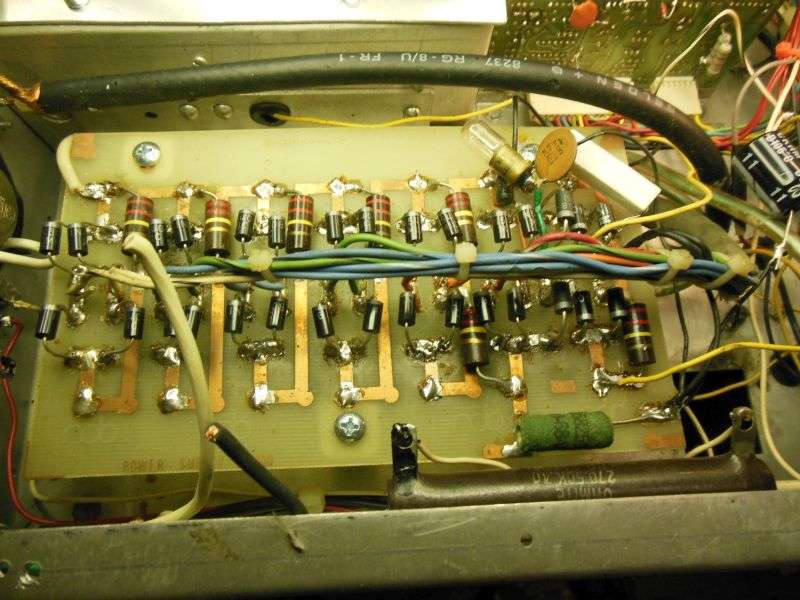
Here is the biggest reason to molest that board. A pile of seven 1978 electrolytic capacitors, all showing their age.
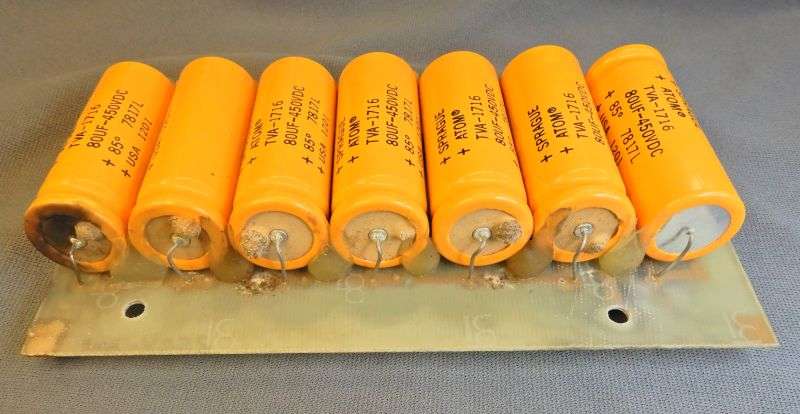
Best solution for my purposes is to connect the six pairs of wires in series. Gets me 1650 Volts AC to feed into the extended version of our Pride HV board.
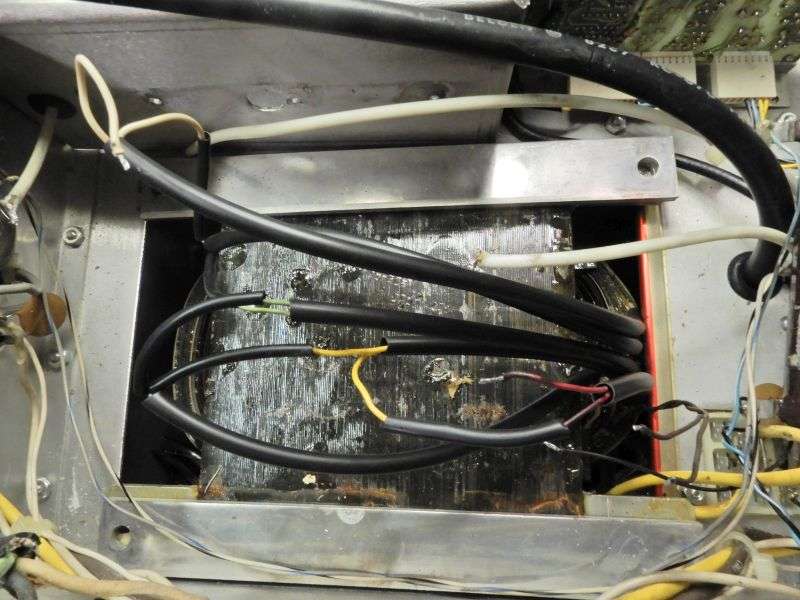
We only need six 450-Volt filters for the HV, but that seventh 260-Volt secondary is rectified and filtered to serve as the screen-grid bias supply. That's scabbed onto the right end of the board in the pic.
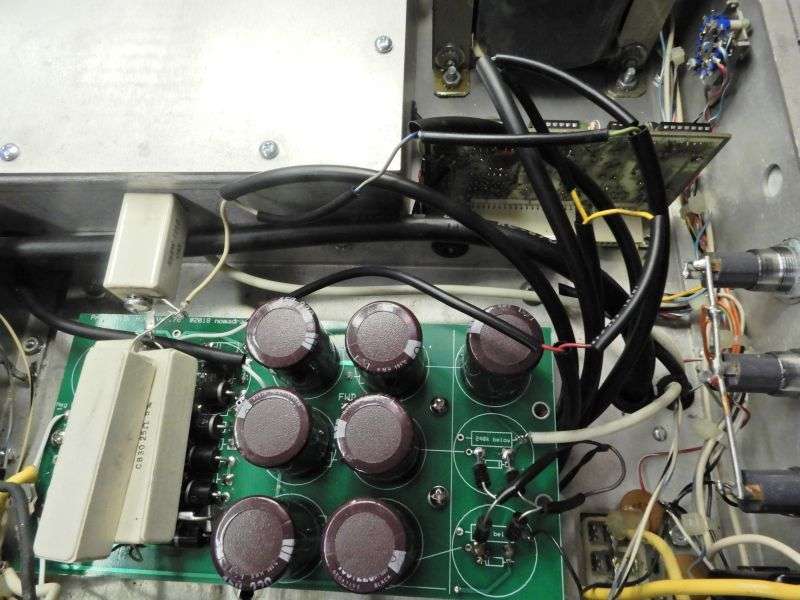
Might not work any better than the original HV setup, but this way I can put the fat, white surge resistors between the HV AC and the input to the bridge rectifier. They add up to about 8 ohms in parallel, and Ohm's Law limits the max surge current from the transformer to 200 Amps, more or less. Well within the surge rating of the 6-Amp rectifiers we used.
Assuming, of course, that the breaker will trip quickly enough to prevent collateral damage.
I don't like using fuses to protect a big, epensive HV transformer. Too easy to defeat a fuse and cause real havoc.
The two 15-Amp breakers seen here replace the fuse holders that were marked "20 Amp". They seem to hold just fine with the amplifier delivering 3200 Watt peaks.
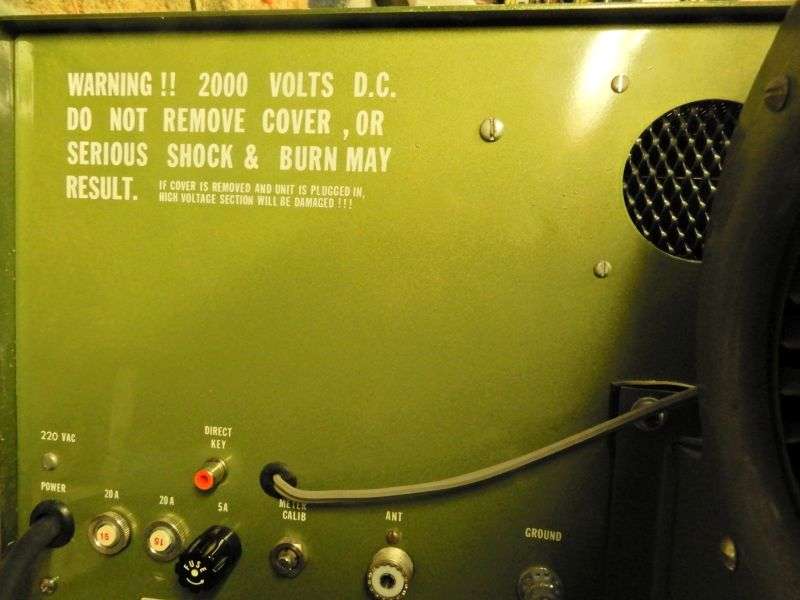
The control circuit board is pure "Glenn". Technical overkill, built on a double-sided plate-through circuit board. All nine electrolytics have to go.
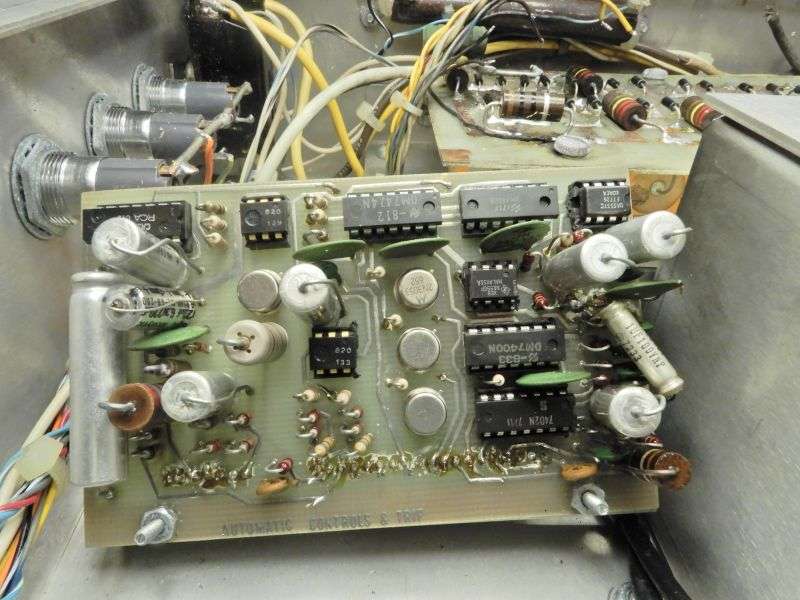
Looks a lot less improvised with radial-lead parts installed.
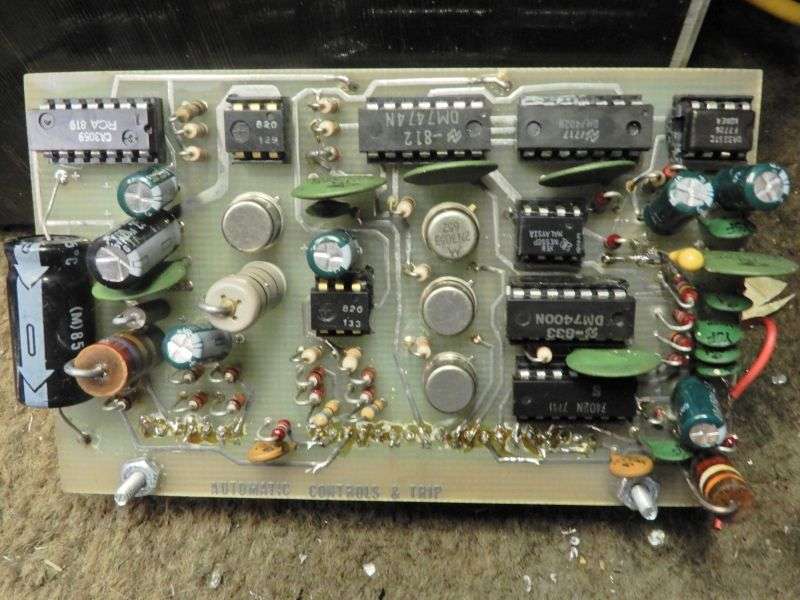
So now we see the differences between this one the "Galaxie" and the Glenn-branded version on the inside.
This logic board contains more than just the keying circuit. It also includes sensing inputs for plate-current overload and screen-grid current overload.
Here's the rear of this board installed in the Glenn.
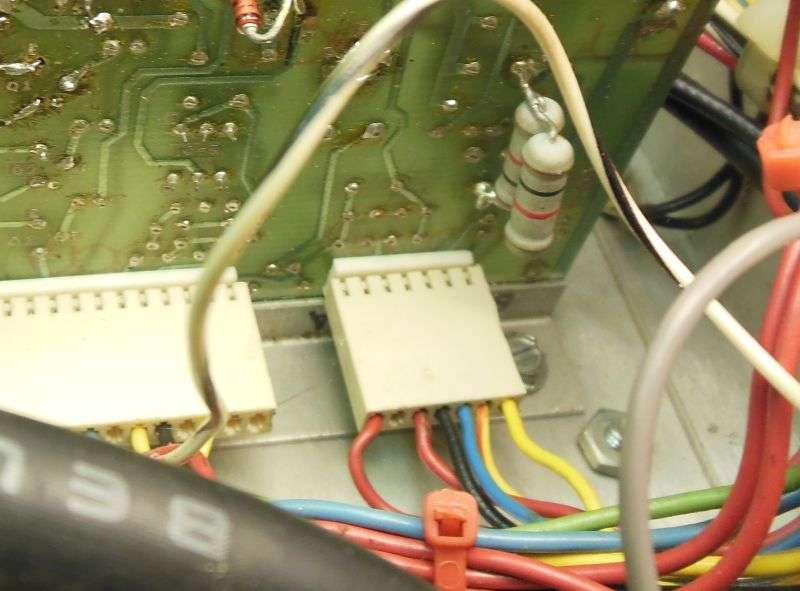
Rather than play "Find the differences between these two pictures", I'll point it out. The right-hand plug on the Glenn has two yellow, one blue, one black and two red wires.
The Galaxie is missing the two red wires. Those are the overload-sensing input wires.
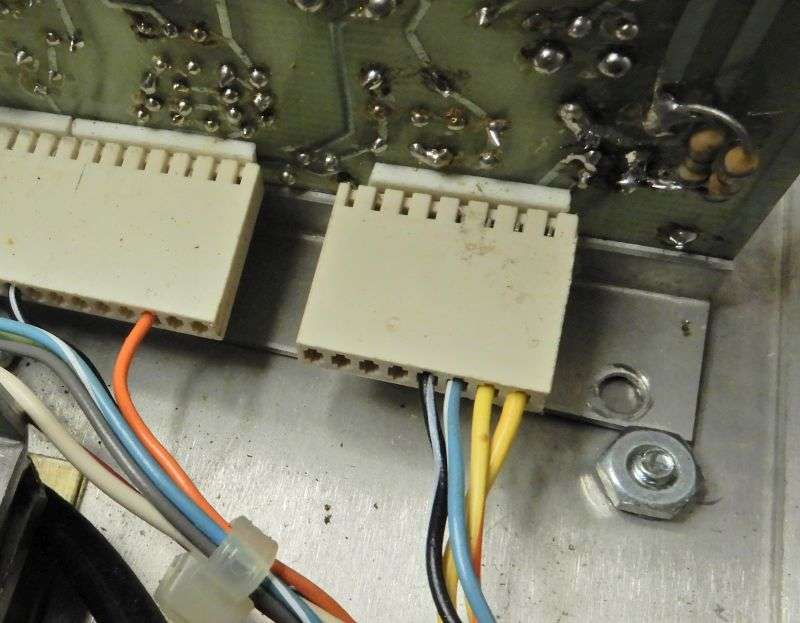
Whoever built this amplifier used Glenn's boards, but just didn't appreciate his safety features.
This guy got off the hook pretty cheap, compared to the last few of this amplifier we have seen over the decades. Worst thing to encounter is corrosion. Fortunately for him, only the rear panel had been exposed to water. Had to replaced most everything on the rear panel, like this output socket.
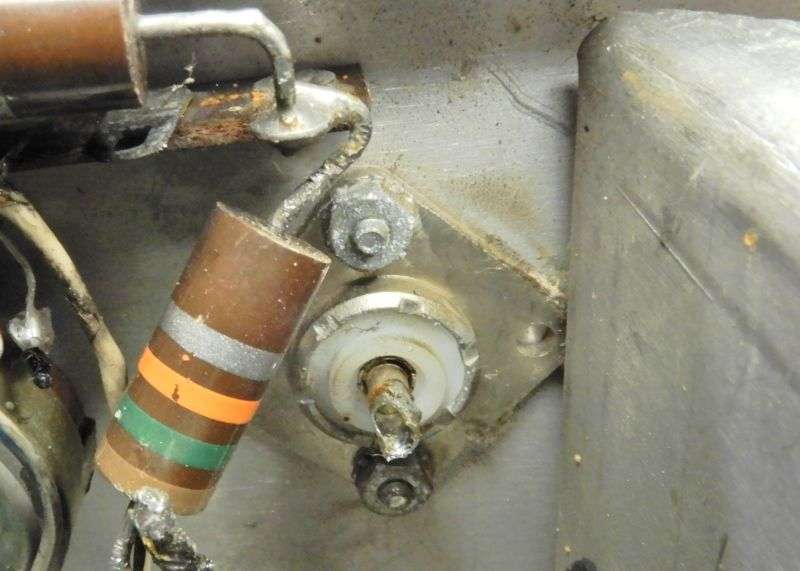
Should have gotten a "beauty" shot of the six tubes and output circuit.
Oops. I was more concerned with making a record of what to do for the next one we see, and getting it back to the owner.
'Cause that's when I get paid.
73
The Glenn 1600 base amplifier used six 4CX250B tubes in parallel. Had another amplifier come through the shop marked "Galaxie 2000". Looks like a Glenn on the inside, but there are differences.

Besides the cabinet color, there are two differences at a glance.
Oops, didn't snap a front-panel shot of the last Glenn we saw. What's different is a light and a switch are missing from this "Galaxie".
The Glenn has a light marked "Fault" and a pushbutton marked "Reset" on the front panel.
This one doesn't.
Other than that, they appear pretty much the same on the inside.
They both use the same whack-a-doodle transformer and high-voltage rectifier/filter setup. Six separate secondary windings of 260 Volts apiece are separately connected to a bridge rectifier and a 80uf 450-Volt filter cap.

This shot is "before" upgrading the high voltage. The bundle of wires running down the center of the board has the six pairs of wires, each pair feeding 260 Volts AC to a bridge/filter cap. The six filter caps are stacked in series to obtain around 2200 Volts Dc.

Here is the biggest reason to molest that board. A pile of seven 1978 electrolytic capacitors, all showing their age.

Best solution for my purposes is to connect the six pairs of wires in series. Gets me 1650 Volts AC to feed into the extended version of our Pride HV board.

We only need six 450-Volt filters for the HV, but that seventh 260-Volt secondary is rectified and filtered to serve as the screen-grid bias supply. That's scabbed onto the right end of the board in the pic.

Might not work any better than the original HV setup, but this way I can put the fat, white surge resistors between the HV AC and the input to the bridge rectifier. They add up to about 8 ohms in parallel, and Ohm's Law limits the max surge current from the transformer to 200 Amps, more or less. Well within the surge rating of the 6-Amp rectifiers we used.
Assuming, of course, that the breaker will trip quickly enough to prevent collateral damage.
I don't like using fuses to protect a big, epensive HV transformer. Too easy to defeat a fuse and cause real havoc.
The two 15-Amp breakers seen here replace the fuse holders that were marked "20 Amp". They seem to hold just fine with the amplifier delivering 3200 Watt peaks.

The control circuit board is pure "Glenn". Technical overkill, built on a double-sided plate-through circuit board. All nine electrolytics have to go.

Looks a lot less improvised with radial-lead parts installed.

So now we see the differences between this one the "Galaxie" and the Glenn-branded version on the inside.
This logic board contains more than just the keying circuit. It also includes sensing inputs for plate-current overload and screen-grid current overload.
Here's the rear of this board installed in the Glenn.

Rather than play "Find the differences between these two pictures", I'll point it out. The right-hand plug on the Glenn has two yellow, one blue, one black and two red wires.
The Galaxie is missing the two red wires. Those are the overload-sensing input wires.

Whoever built this amplifier used Glenn's boards, but just didn't appreciate his safety features.
This guy got off the hook pretty cheap, compared to the last few of this amplifier we have seen over the decades. Worst thing to encounter is corrosion. Fortunately for him, only the rear panel had been exposed to water. Had to replaced most everything on the rear panel, like this output socket.

Should have gotten a "beauty" shot of the six tubes and output circuit.
Oops. I was more concerned with making a record of what to do for the next one we see, and getting it back to the owner.
'Cause that's when I get paid.
73
Last edited:











